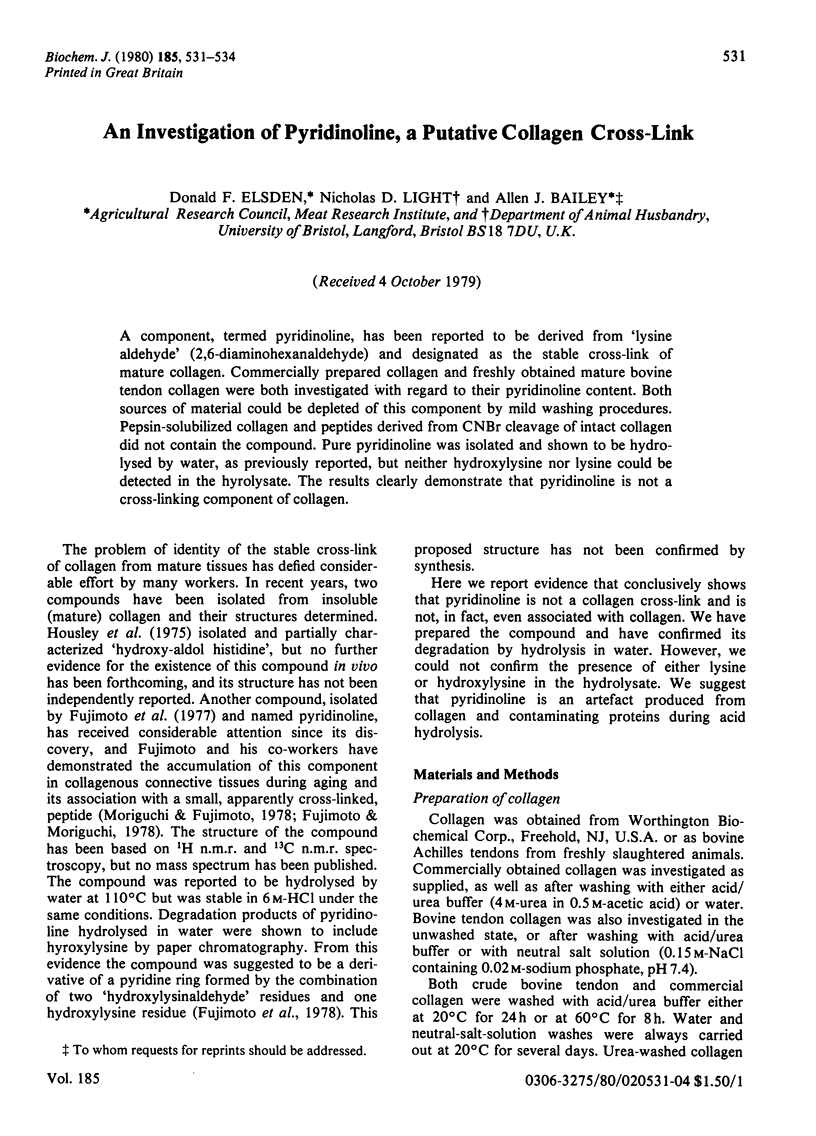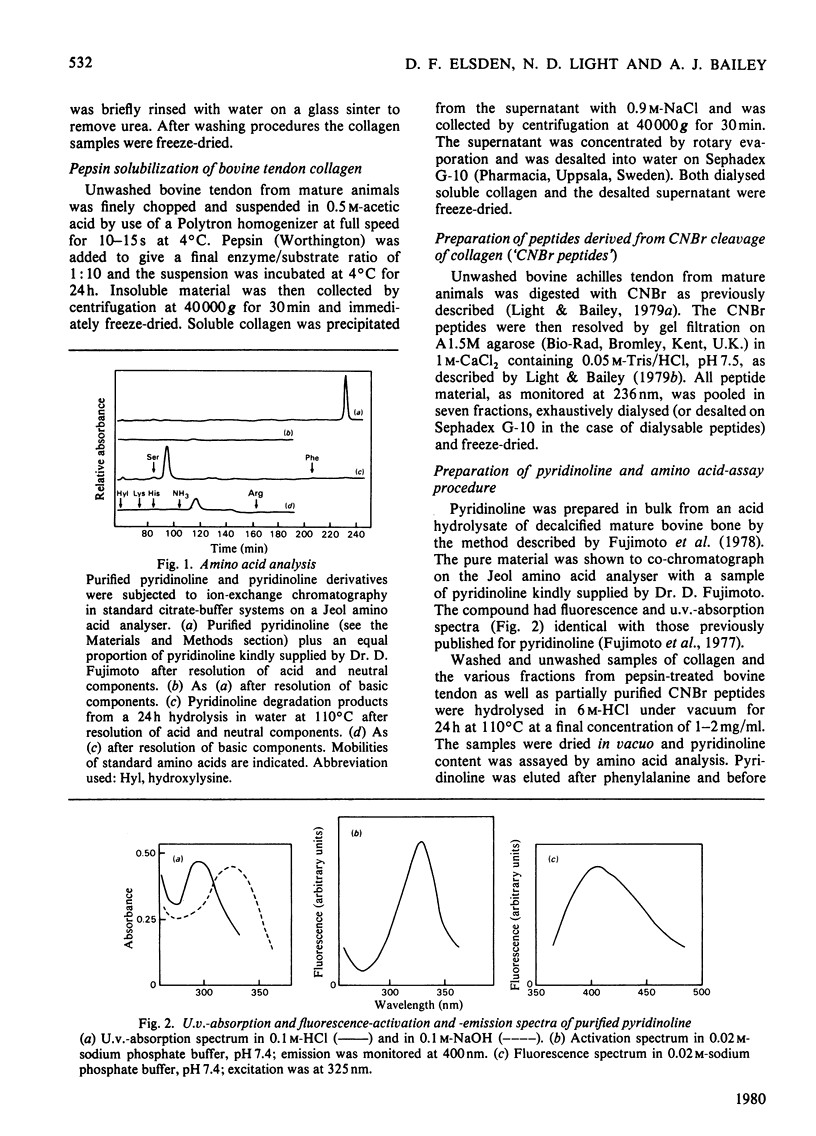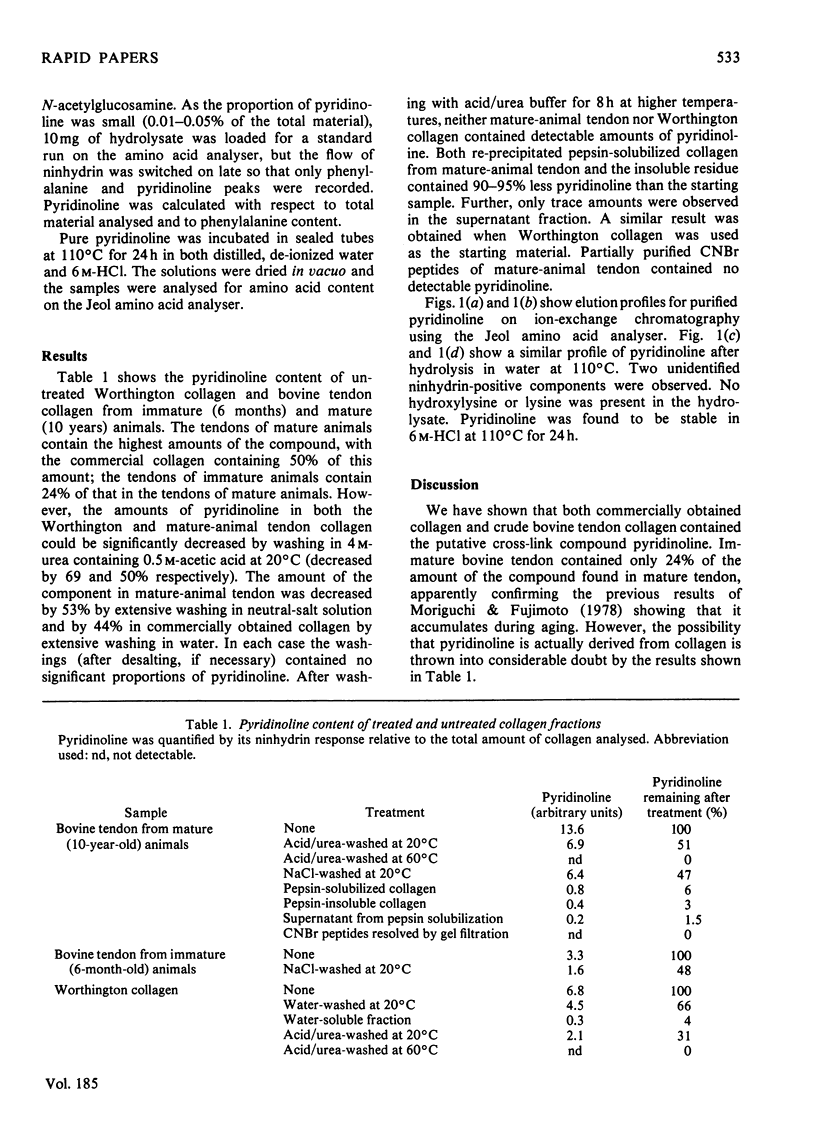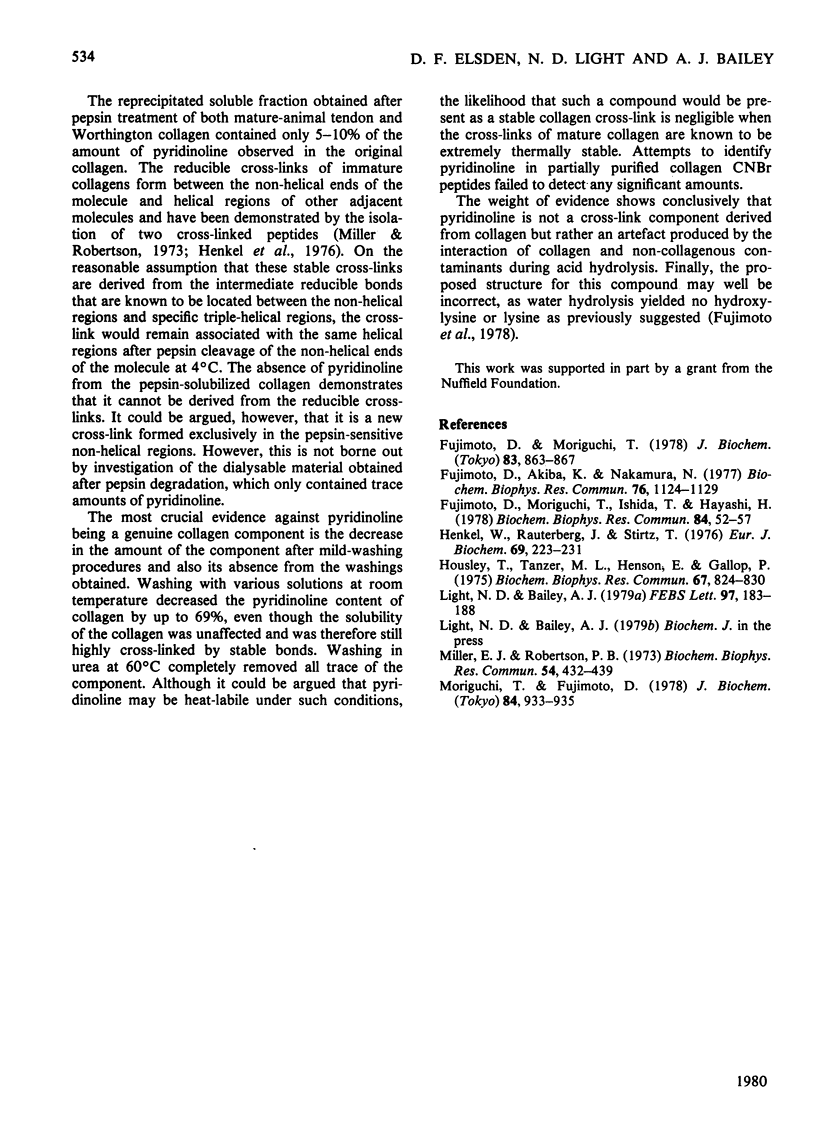Abstract
A component, termed pyridinoline, has been reported to be derived from 'lysine aldehyde' (2,6-diaminohexanaldehyde) and designated as the stable cross-link of mature collagen. Commerically prepared collagen and freshly obtained mature bovine tendon collagen were both investigated with regard to their pyridinoline content. Both sources of material could be depleted of this component by mild washing procedures. Pepsin-solubilized collagen and peptides derived from CNBr cleavage of intact collagen did not contain the compound. Pure pyridinoline was isolated and shown to be hydrolysed by water, as previously reported, but neither hydroxylysine nor lysine could be ds not a cross-linking component of collagen.
Full text
PDF



Selected References
These references are in PubMed. This may not be the complete list of references from this article.
- Fujimoto D. Isolation and characterization of a fluorescent material in bovine achilles tendon collagen. Biochem Biophys Res Commun. 1977 Jun 20;76(4):1124–1129. doi: 10.1016/0006-291x(77)90972-x. [DOI] [PubMed] [Google Scholar]
- Fujimoto D., Moriguchi T., Ishida T., Hayashi H. The structure of pyridinoline, a collagen crosslink. Biochem Biophys Res Commun. 1978 Sep 14;84(1):52–57. doi: 10.1016/0006-291x(78)90261-9. [DOI] [PubMed] [Google Scholar]
- Fujimoto D., Moriguchi T. Pyridinoline, a non-reducible crosslink of collagen. Quantitative determination, distribution, and isolation of a crosslinked peptide. J Biochem. 1978 Mar;83(3):863–867. doi: 10.1093/oxfordjournals.jbchem.a131983. [DOI] [PubMed] [Google Scholar]
- Henkel W., Rauterberg J., Stirtz T. Isolation of a crosslinked cyanogen-bromide peptide from insoluble rabbit collagen. Tissue differences in hydroxylation and glycosylation of the crosslink. Eur J Biochem. 1976 Oct 1;69(1):223–231. doi: 10.1111/j.1432-1033.1976.tb10877.x. [DOI] [PubMed] [Google Scholar]
- Housley T., Tanzer M. L., Henson E., Gallop P. M. Collagen crosslinking: isolation of hydroxyaldol-histidine, a naturally-occurring crosslink. Biochem Biophys Res Commun. 1975 Nov 17;67(2):824–830. doi: 10.1016/0006-291x(75)90887-6. [DOI] [PubMed] [Google Scholar]
- Light N. D., Bailey A. J. Changes in crosslinking during aging in bovine tendon collagen. FEBS Lett. 1979 Jan 1;97(1):183–188. doi: 10.1016/0014-5793(79)80080-0. [DOI] [PubMed] [Google Scholar]
- Miller E. J., Robertson P. B. The stability of collagen cross-links when derived from hydroxylsyl residues. Biochem Biophys Res Commun. 1973 Sep 5;54(1):432–439. doi: 10.1016/0006-291x(73)90940-6. [DOI] [PubMed] [Google Scholar]
- Moriguchi T., Fujimoto D. Age-related changes in the content of the collagen crosslink, pyridinoline. J Biochem. 1978 Oct;84(4):933–935. doi: 10.1093/oxfordjournals.jbchem.a132206. [DOI] [PubMed] [Google Scholar]


